•Menu
•Tin đọc nhiều
-
 Nghệ sĩ Phương Cẩm Ngọc, Nguyễn Văn Khởi đoạt giải nhất cuộc thi “Tài năng diễn viên Cải lương toàn quốc 2023”
Nghệ sĩ Phương Cẩm Ngọc, Nguyễn Văn Khởi đoạt giải nhất cuộc thi “Tài năng diễn viên Cải lương toàn quốc 2023”
-
 Nghệ sĩ Minh Cảnh tuổi U90, xúc động nói trước mộ vợ: "Anh giờ đây không hề tiếc nuối, ham muốn điều gì nữa"
Nghệ sĩ Minh Cảnh tuổi U90, xúc động nói trước mộ vợ: "Anh giờ đây không hề tiếc nuối, ham muốn điều gì nữa"
-
 Cặp Đôi Đào Kép Chánh của Kim Chung 2 Minh Cảnh & Diệu Hiền Tái Ngộ Sau Gần 60 Năm
Cặp Đôi Đào Kép Chánh của Kim Chung 2 Minh Cảnh & Diệu Hiền Tái Ngộ Sau Gần 60 Năm
-
 Nghệ sĩ Thanh Hằng, Trọng Phúc, Phượng Loan tham gia Ban huấn luyện "Chuông vàng vọng cổ" lần thứ 18 - năm 2023
Nghệ sĩ Thanh Hằng, Trọng Phúc, Phượng Loan tham gia Ban huấn luyện "Chuông vàng vọng cổ" lần thứ 18 - năm 2023
-
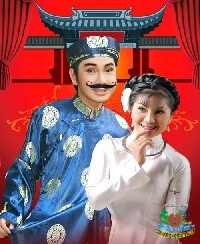 Vũ Luân: 'Tôi và Hồng Loan không biết gì về hợp đồng Hồng Phượng ký'
Vũ Luân: 'Tôi và Hồng Loan không biết gì về hợp đồng Hồng Phượng ký'
-
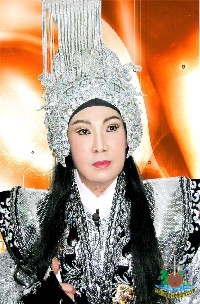 Tòa án thụ lý vụ kiện tranh chấp tài sản của nghệ sĩ Vũ Linh
Tòa án thụ lý vụ kiện tranh chấp tài sản của nghệ sĩ Vũ Linh
-
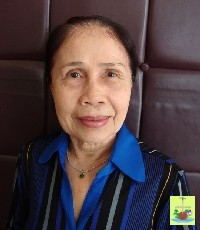 XÉT TẶNG DANH HIỆU NGHỆ SĨ NHÂN DÂN, NGHỆ SĨ ƯU TÚ: Đừng sót lọt tài năng, người có nhiều cống hiến
XÉT TẶNG DANH HIỆU NGHỆ SĨ NHÂN DÂN, NGHỆ SĨ ƯU TÚ: Đừng sót lọt tài năng, người có nhiều cống hiến
-
 Hành trình 20 năm - Một trang web để đời
Hành trình 20 năm - Một trang web để đời
-
 Nam nghệ sĩ Thanh Điền đã trở thành youtuber chuyên nghiệp?
Nam nghệ sĩ Thanh Điền đã trở thành youtuber chuyên nghiệp?
-
 Hoài Minh - Từ “trang giấy trắng” đến Chung kết “Chuông vàng vọng cổ” 2023
Hoài Minh - Từ “trang giấy trắng” đến Chung kết “Chuông vàng vọng cổ” 2023
•Tin ngẫu nhiên
-
 ‘Giao lưu văn hóa’ có bỏ quên sân khấu?
‘Giao lưu văn hóa’ có bỏ quên sân khấu?
- Vũ Ngọc Long và Niềm Mơ Ước
-
 Những kỷ niệm dưới ánh đèn sân khấu
Những kỷ niệm dưới ánh đèn sân khấu
-
 Bao giờ cải lương có được Hà Triều, Hoa Phượng?
Bao giờ cải lương có được Hà Triều, Hoa Phượng?
-
 Sân khấu: Chinh phục khán giả với đề tài lịch sử
Sân khấu: Chinh phục khán giả với đề tài lịch sử
-
 Hoa Hậu cài lương một thời nhớ nghề phá cách
Hoa Hậu cài lương một thời nhớ nghề phá cách
-
 Nghệ sĩ sân khấu vui xuân muộn
Nghệ sĩ sân khấu vui xuân muộn
-
 Tọa đàm khoa học “Theo dòng lịch sử sân khấu cải lương”
Tọa đàm khoa học “Theo dòng lịch sử sân khấu cải lương”
-
 Làm sân khấu "tử tế": Cần “bàn tay” nâng đỡ
Làm sân khấu "tử tế": Cần “bàn tay” nâng đỡ
-
 Nhạc sỹ Quốc Dũng: Bảo Yến bị mắc mưu và bôi nhọ
Nhạc sỹ Quốc Dũng: Bảo Yến bị mắc mưu và bôi nhọ
•Thống kê truy cập
![]() Đang truy cập :
224
Đang truy cập :
224
•Máy chủ tìm kiếm : 4
•Khách viếng thăm : 220
![]() Hôm nay :
14477
Hôm nay :
14477
![]() Tháng hiện tại
: 1122761
Tháng hiện tại
: 1122761
![]() Tổng lượt truy cập : 76938139
Tổng lượt truy cập : 76938139
 »
Tin Tức
»
English
»
Tin Tức
»
English
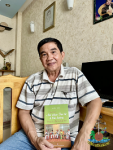
Lan tỏa nét độc đáo của đờn ca tài tử
Sách "Tìm hiểu âm nhạc tài tử và cải lương vọng cổ - Ghita phím lõm" vừa ra mắt công chúng của nhạc sĩ Kiều Tấn là một tư liệu quý về tân nhạc, cổ nhạc và đờn ca tài tử (ĐCTT).
HISTORY OF VIETNAMESE MUSIC
Đăng lúc: Thứ ba - 03/06/2014 08:34 - Đã xem: 4168
HISTORY OF VIETNAMESE MUSIC
Dedicated to the traditional musicians of Vietnam:
“May their Art flourish and their creativity be reborn”
The Vietnamese have produced several worthwhile books about music but these have remained buried in the relative obscurity of the Vietnamese language.
THE PAST HISTORY OF VIETNAMESE MUSIC
The music of Vietnam and its history are too complex to be described briefly.
True, to a large extent, Vietnamese music was handed down from one generation to
another. I am spending my life studying music of every corner of the country,
and am fortunate, however, in having some various written and oral sources on my
research.
It is hoped that the present information will prove both informative and
entertaining to those who have been attracted to Vietnamese music. The exact
ethnological origin of the Vietnamese music is not clearly known. In addition to
the Chinese, Korean, Mongolian and Southeast Asian’s influences found in
archeological remnants, there seems to be something that can only be explained
as indigenously Vietnamese.
Along with Chinese literature, architecture, government, and religion, Vietnam
had adopted Chinese music models and developed music of her own. However, in the
process of adaptation, the system was likely reshaped by the Vietnamese people
according to their own well established habit.
Western music is easily understood by Westerners because it is part of their own
heritage. A large part of Vietnamese music is either incomprehensible to them or
greatly oversimplified for them by convenient stereotypes provided by only
partially-informed writers, who sometimes confuse it with that of China.
Therefore, before Westerners could understand Vietnamese music, they must first
have an idea of its place in the general history of Vietnam.
Because of her geographical locations, Vietnam belongs as much to East-Asia as
to South-Asia. Moreover, Vietnam was under Chinese domination for a thousand
years (from the 1st to the 10th century). Besides, at the crossroads of peoples
and civilization, Vietnam was also in touch with the people of the ancient
Indianized Kingdom of Champa (The Cham still exist in greatly reduced number as
one of the ethnic minorities in Viet Nam today).
Vietnamese music, like Vietnamese culture, is primarily East Asian rather than
Southeast Asian. Its closest affinities are to China, Korea, Japan, and
Mongolia. This combination of influences has produced a sophisticated and
multifaceted musical culture, and it is not surprising that Vietnamese music
shares many characteristics with that of China. Among the common items are the
Pentatonic (five-tone) scale, and more than a dozen instruments, some of which
are central to the music of both cultures.
Vietnam has many kinds of music, and many varieties of each musical form: The
North, The Center and The South have their own kinds of music including:
Court music – (which has eight subdivisions)
Ceremonial and Religious music – The prayers of thanks and supplications of
remembrance. (Religions include Buddhism, Confucianism, and Caodaiism)
Music for Entertainment - (roughly comparable to Western Chamber music)
Folk music and the ethnic minorities - provide even more variety with their own
ceremonies, dances and songs.
Musical Theater, long popular in Vietnam, divides clearly into three sections:
The Folk Opera of the North - resembles the opera comic and the Renovated
Theater of the South (Hat Cai luong).
The Classical Theater of the Central - akin to grand opera called the “Hat Boi”.
Legend claims that the “Hat Boi” was initially brought to Viet Nam from China by
a Chinese invasion soldier who was captured by the Vietnamese army. (1)
The Renovated Theater of the South (Hat Cai Luong) - a kind of operetta. It was
born in the twentieth century as a mixture of Chamber music, French theater, and
traditional element. (2)
-------------------------------------------------------------
(1)The Hat Boi is a conventionalized and symbolic art form, not at all a
realistic one. The Vietnamese Hat Boi borrowed from Chinese opera the symbolic
use of scenery, the costumes, makeup, and the gestures. Its stories remain
mostly Chinese or translations of Chinese historical tales which have a
Confucian moral. Musically, in Hat Boi the percussion is the most important
element. The largest drum is the “trô'' ng chiên” (battle drum), which punctuates
declamations and accompanies songs and dances, and also leads the orchestra. The
second most important musician plays the “Kèn” (oboe or sona). The “Kèn” in
Vietnamese ears “rips the heart from your intestines”, and it is therefore also
used in funeral music. The “dan Co or dan Nhi and the dan Gao” (2
stringed-fiddle) is especially used to accompany declamations. Percussion
instruments include Gongs and Cliquettes, and sometimes also the buffalo horn
and Cymbals. Today, the Hat Boi is in a period of decline
(2) The Hat Cai luong - The growth of the Hat Cai luong made it necessary to
have a great deal of additional music. The Nhac Tai Tu music was not enough; so
many new pieces were written, particularly shorter selections to fit particular
kinds of action. Singing is the most important feature, as 70 % to 80 % of a
performance may be devoted to songs, accompanied by instruments such as the “dan
Kim” or “dan Nguyet” (moon shaped-lute), the “dan Tranh” (Zither), the “dan Co”
or “dan Nhi” and the “dan Gao” (2 stringed-fiddle), the “dan Tam” (3 nylon
strings fretless lute), the “dan Doc huyen” or “dan Bau” (monochord). The Hat
Cai luong has increased its popularity over the years compared with the Hat Boi.
Nguồn tin: NS Nguyen Vinh Bao
Những tin mới hơn
- Actress Bich Hanh’s biography and memories (12/07/2014)
- Early days in Le Thuy’s performing career (23/07/2014)
- The meaning & history of SaiGon - Ý nghĩa và lịch sử Sài Gòn (29/07/2014)
- Actress Thanh Thanh Hoa – The Gold Medalist of the Prestigious Thanh Tam Award in 1961 (15/08/2014)
- THE SURVIVAL OF THE TRADITIONAL MUSIC (NHAC CO TRUYEN) (05/07/2014)
- Sixty Zitherists perform in HCMC (03/07/2014)
- Actress UT BACH LAN – An Artist’s Life is Like a Short-lived Flower (11/06/2014)
- Vọng Cổ : Sáu Câu (Six Phrases) (18/06/2014)
- Actor Viet Hung (28/06/2014)
- Bach Tuyet, A Precious Gem of Cai luong (06/06/2014)
Những tin cũ hơn
- Cai luong legend comes to life in photos (29/05/2014)
- Vietnam has full Vietnam has full foundation on sovereignty over Hoang Sa, Truong Sa (27/05/2014)
- Ex-ethnic beauty queen says victory made her miserable (25/05/2014)
- Vietnam provinces pledge support foreign investors after riots (18/05/2014)
- Op-Ed: The greatest Mother’s Day gift (10/05/2014)
- Traditional Vietnamese music festival kicks off in Bac Lieu (23/04/2014)
- Sad life stories of “Đờn ca tài tử” elite stars (01/04/2014)
- Remembering a hick (hai lua) named Sen (26/03/2014)
- MÁU NHUỘM SÂN CHÙA - YÊN LANG (18/03/2014)
- Ha Long Carnival to take place on April 30 (14/03/2014)
Mã an toàn: ![]()
•CHUYỂN ĐẾN WEBSITE...
•Tin mới nhất
-
 Lan tỏa nét độc đáo của đờn ca tài tử
Lan tỏa nét độc đáo của đờn ca tài tử
-
 Nghệ sĩ Trung Dân xúc động khi được khen thế vai NSND Diệp Lang
Nghệ sĩ Trung Dân xúc động khi được khen thế vai NSND Diệp Lang
-
 Kim Tiểu Long: "Ly hôn" là món quà tôi tặng cho đời mình
Kim Tiểu Long: "Ly hôn" là món quà tôi tặng cho đời mình
-
 Hành trình 20 năm - Một trang web để đời
Hành trình 20 năm - Một trang web để đời
-
 Nghệ Sĩ hài Hồng Vân "thắng án" CEO Nguyễn Phương Hằng ngoạn mục
Nghệ Sĩ hài Hồng Vân "thắng án" CEO Nguyễn Phương Hằng ngoạn mục
-
 Lê Phương mê làm đào chánh, như "nhặt được vàng" với phim "Sáng đèn"
Lê Phương mê làm đào chánh, như "nhặt được vàng" với phim "Sáng đèn"
-
 Nghệ sĩ Diệu Hiền: Ai hỏi, tui nói tui là bạn của Bạch Tuyết
Nghệ sĩ Diệu Hiền: Ai hỏi, tui nói tui là bạn của Bạch Tuyết
-
 Cá tháng Tư
Cá tháng Tư
-
 Nghệ sĩ Phước Sang bị đột quỵ
Nghệ sĩ Phước Sang bị đột quỵ
-
 Nghệ sĩ Bích Hạnh đánh đổi nghệ thuật cho gia đình, cuối đời lủi thủi một mình
Nghệ sĩ Bích Hạnh đánh đổi nghệ thuật cho gia đình, cuối đời lủi thủi một mình
•Đăng nhập thành viên
- Những Vở Diễn Hay KIỆT TÁC SÂN KHẤU THẾ GIỚI: LÔI VŨ
- Nghệ Sĩ Tâm Sự Ngọc Huyền 'vẫn bị cấm hát tại Việt Nam'
- Đời Thường Nghệ Sĩ Con dâu trẻ của NSUT Thoại Miêu qua đời chưa đầy 2 năm cưới
- Đời Thường Nghệ Sĩ Nghệ sĩ Tú Sương kết hôn với Việt kiều
- Tâm Tư Thành Viên Người trong giới tự nói gì về nghệ sĩ Mỹ Châu ?
- Tôi cũng biết một soạn giả có tên YÊN BA, nhưng tên thật là PHẠM DIỆP PHƯƠNG, là quân y, KBC 7019
- Bài viết khá đầy đủ về cuộc đời của thầy Văn Hải. Có vài lỗi chính tả không nên có
- thag điên nai ma diên cai gi . toan bac chuoc nsut thanh nam . bat chuoc kieu ngu
- Tôi rất mong chờ để được xem cải lương nhưng thật thất vọng.
- Bài phân tích giọng ca của nghệ sĩ Minh Cảnh rất sâu sắc, giúp thế hệ sau và khán giả hiểu biết về...
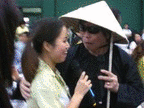
Lan tỏa nét độc đáo của đờn ca tài tử
Sách "Tìm hiểu âm nhạc tài tử và cải lương vọng cổ - Ghita phím lõm" vừa ra mắt công chúng của nhạc sĩ Kiều Tấn là một tư liệu quý về tân nhạc, cổ nhạc và đờn ca tài tử (ĐCTT).

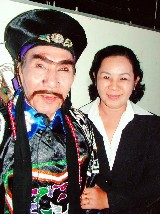
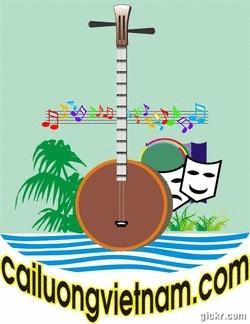
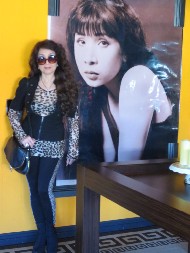
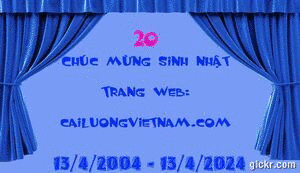
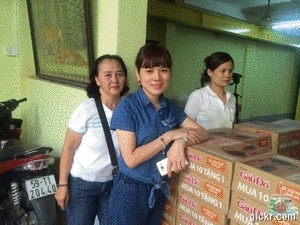



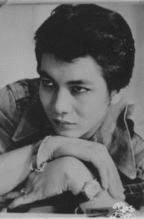




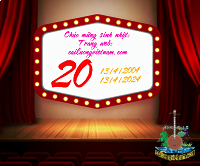

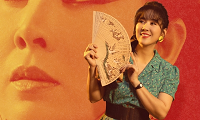


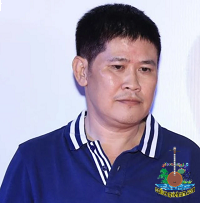
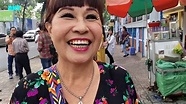
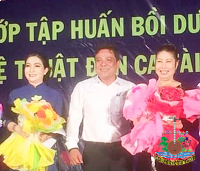

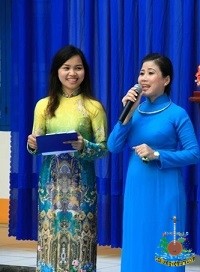

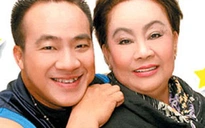
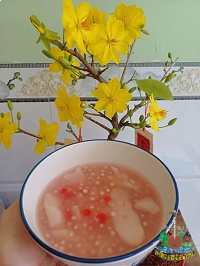









Ý kiến bạn đọc